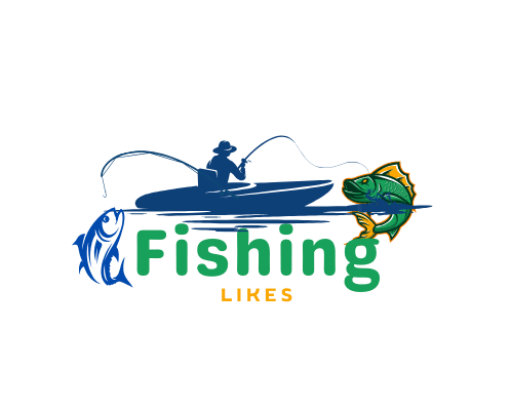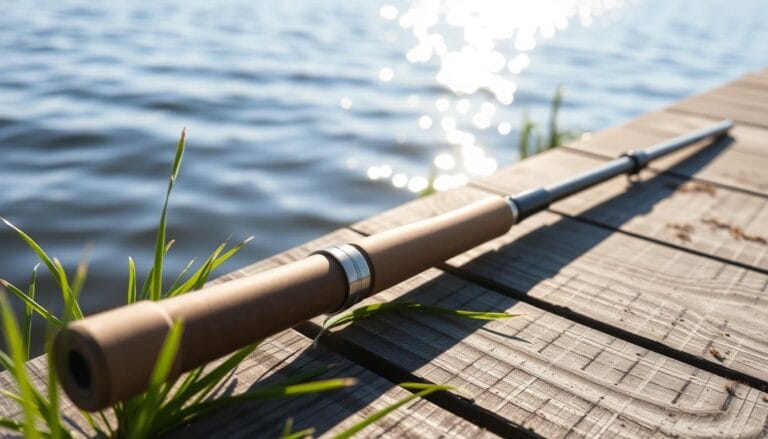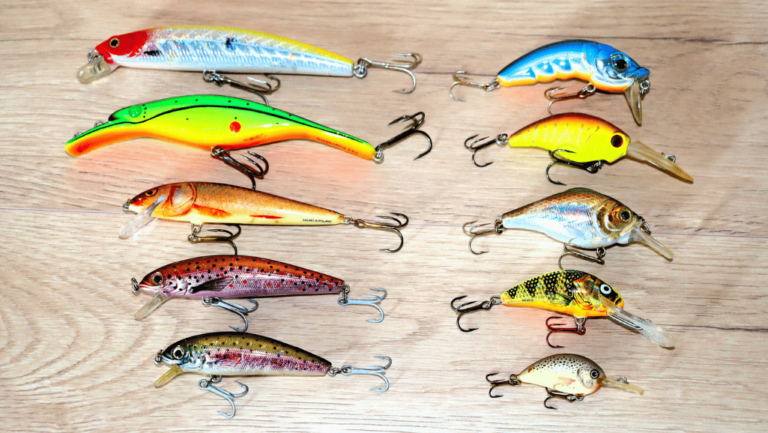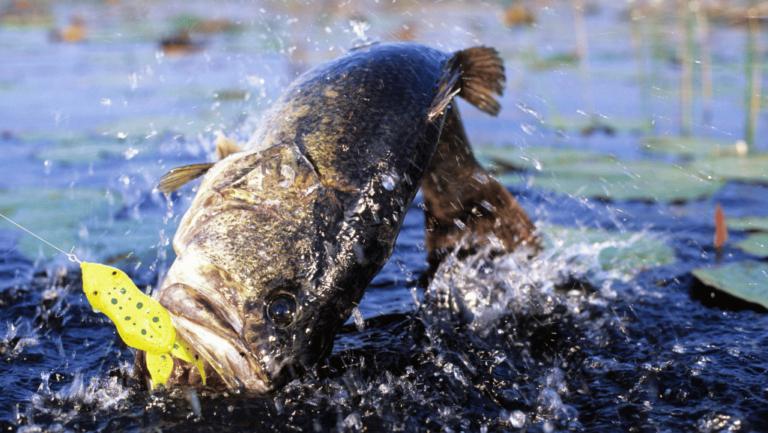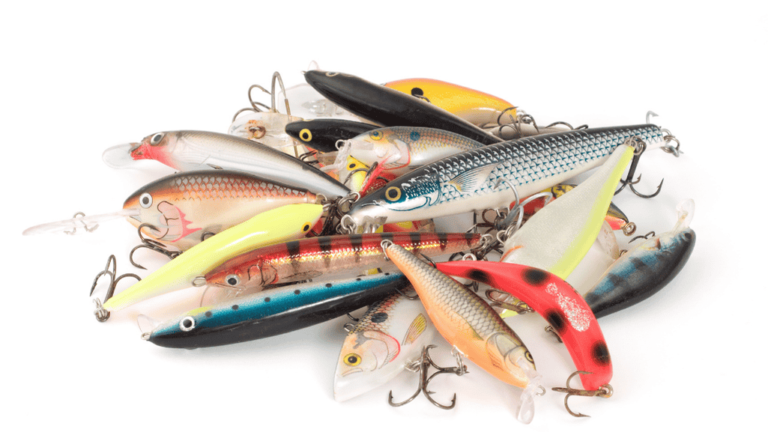Choosing the right jig for perch fishing in freshwater can boost your chances of catching more. This guide is here to offer crucial advice and tips for jigging success. It’s vital to know the habits of perch and how to change your fishing style for different areas and situations. We will cover everything from selecting the perfect jig, the best actions, to the must-have gear. With the right knowledge, you can make your fishing trips more rewarding.
Key Takeaways
- The right jig is essential for successful perch fishing.
- Select jigs that match water conditions and perch behavior.
- Proper techniques and gear can significantly enhance your catch rate.
- Expert tips and insights will be shared throughout this guide.
- Stay tuned for various recommendations and best practices.
What is Jigging for Perch?
Jigging for perch is not like regular fishing. It uses a special technique. You move a weighted lure up and down like prey fish. This makes perch want to catch the lure. Whether you’re new to fishing or an expert, learning to jig fish can help you catch more perch.
Understanding the Basics
Jigging means dropping your lure to a certain depth and pulling it up. Then, you let it fall back down. The goal is to make it look like a struggling fish. Fishermen change the speed and depth of their jigs. This can help attract perch at all levels under water. By mastering these skills, you can be better at jig fishing.
Why Jigging is Effective for Perch
Perch love easy prey. When you jig correctly, it looks like a little fish or insect in trouble. This attracts perch. Experts and hobby fishermen use this technique a lot. It’s a known way to catch more perch.
Choosing the Best Jig for Perch

For sport fishing, picking the right jig for perch is crucial. You should think about the water, the type of perch you’re after, and how those fish act. Knowing this stuff can really boost your fishing fun.
Types of Jigs
There are many jigs out there, all made for certain fishing spots. Let’s look at some common ones:
- Marabou Jigs: These have fluffy feathers that look great underwater. They work best in calm or slow moving water.
- Plastic Grubs: They have soft plastic tails for extra wiggle. Perfect for fishing in waters where perch are active.
- Hair Jigs: These have hair or fake hair and are great for cold water fishing. They look like natural food to perch.
Recommended Jigs for Perch
Anglers and experts have their favorites for perch fishing. Let’s check out some well-loved jigs:
- Berkley PowerBait Ribbontail Grub: Its ribbed design and bright colors attract perch well.
- VMC Hot Skirt Jig: It makes noise and has a skirt that moves, good for dark or muddy waters.
- Northland Tackle Whistler Jig: This one has a propeller that creates vibration and sound, which fish love in deeper waters.
Picking the right jig means thinking about where you’re fishing. Factors like water temperature, clarity, and fish activity are important. The right fishing gear and jig will help you catch more fish.
Fishing Tackle Essentials for Jigging
The right fishing tackle is key for catching perch. Let’s look at the necessary gear for a successful jigging trip.
Rods and Reels
Choosing the right rod and reel is crucial. You want a light to medium-light, fast action rod. This lets you feel when a perch lightly bites. St. Croix and Shimano make top-notch rods. For reels, a smooth spinning reel is best. The Shimano Stradic and Daiwa BG are top choices for their smooth action.
Line Selection
Picking the correct line greatly affects jigging success. There are three main types: monofilament, braided, and fluorocarbon. Monofilament works well for most situations and is easy to handle. Braided line is super sensitive but needs a fluorocarbon leader for invisibility. Fluorocarbon is great for being invisible underwater and for its durability. For perch, a mix of braided line and a fluorocarbon leader usually works best.
Artificial Bait Options for Perch
Choosing the right artificial bait can make perch fishing much better. If you pick the right bait and use it well, you’ll have more success.
Types of Artificial Baits
Many types of artificial baits are great for perch. Here are some favorites:
- Soft Plastics: They look like small fish or bugs and move realistically, attracting perch.
- Spinnerbaits: These baits give off vibrations and flashes, pulling in perch from far away.
- Crankbaits: They cover a lot of water and can look like an easy meal to perch.
Best Practices
For the best results with artificial bait, remember these tips:
- Match the Hatch: Pick baits that look like what the perch usually eat in that area.
- Vary Retrieval Techniques: Try different ways of moving the bait. This can help find what attracts the perch.
- Use Scented Baits: Smelling baits can be a plus, especially in water that’s not clear.
By using the right bait and following these tips, your perch fishing trips will be more fun and catch more fish.
Top Fishing Techniques for Jigging Perch
To catch perch like a pro, you need to master vertical jigging and horizontal jigging. Each method has its own benefits that help depending on where you’re fishing and the perch behavior. We’re going to explore both to help you catch more fish.
Vertical Jigging
Imagine dropping the jig right under your boat and moving it up and down. That’s what vertical jigging is all about. It works well in deep waters with structures like rocks and weed. Use a light rod, about 5’ 6”, with a very light reel for better control.
When the lure goes down, that’s when most fish take a bite. A small lure, between 0.5 to 5 grams, fits well for this. Remember, the water depth and how fast the water moves affect your lure’s fall and the fish’s interest.
Horizontal Jigging
On the other hand, horizontal jigging mimics prey movement by casting your lure out and pulling it back in. It’s great for covering more space in waters of medium depth. You’ll want a similar light setup but with a rod up to 7 feet for distance.
This time, a reel with braided line and a thin fluorocarbon leader is perfect. It helps you cast further and more accurately. For this method, using lighter jigs will slow down your lure’s fall. This can be less scary to fish in shallower spots.
You can use these methods from both the shore and a boat. Picking the right gear for where you are can make a big difference in how many fish you catch.
- Vertical Jigging
- Best for deep water and perch near structures.
- A rod between 4’ 6” and 6’ works, but 5’ 6” is best.
- A reel under 9g, better if under 7g.
- Look for lures that weigh from 0.5 to 5 grams.
- Horizontal Jigging
- Great for covering more space and depth variations.
- A rod from 5’ 6” to 7’ is ideal.
- Use a 2500 size reel for better control.
- Pair that with a strong yet thin braid and a leader.
Knowing these fishing techniques will surely up your catch. Whether you go for the finesse of vertical jigging or the wide net of horizontal, you’re set for success.
Seasonal Tips for Perch Fishing
Perch fishing changes a lot with the seasons. Understanding these changes is key to catching more fish. Here are some tips for fishing across the year.
In spring, from early April to mid-May, perch spawn, laying eggs on vegetation or rocks. Without fry guarding, using light tackle like the TFO’s Trout-Panfish spinning rod TPS 701-1 is smart. Spring is also good for lures such as Lucky Craft’s Pointer 78 and Rapala Ultra-Light Rippin Rap.
As summer comes, perch move to deeper waters. Try the yo-yo retrieve for better results. A tandem dropshot rig is a good choice too. We recommend a 4-pound monofilament line for sensitivity and hold.
Come fall, perch are more active. Use size six or eight hooks with hard baits. Soft baits on 1/8 or 1/4 ounce jigs work well. Trying different retrieval speeds is key in fall.
Winter is ice fishing season. Use gear like fish finders to find schools of perch below the ice. Light tackle is still useful. Knowing perch behavior in all seasons will help you catch more.
Burnie Haney, a pro in fishing, points out how crucial it is to adapt to the seasons for good fishing. Following these tips helps you stay ready for the changing perch fishing conditions.
| Season | Recommended Gear | Effective Techniques |
|---|---|---|
| Spring | TFO’s TPS 701-1, Lucky Craft’s Pointer 78, Rapala Ultra-Light Rippin Rap | Light tackle, strategic egg-laying site targeting |
| Summer | 4-pound monofilament, Cortland Masterbraid | Yo-yo retrieve, tandem dropshot rigs |
| Fall | Size six/eight hooks, 1/8 or 1/4 ounce ballhead jigs | Variable retrieval speeds, aggressive targeting |
| Winter | Light tackle, electronic gear | Ice fishing, precise school location |
Using Electronic Gear to Locate Perch
Nowadays, anglers depend on electronic tools to find more fish. Fish finders and GPS are key, helping them find perch schools easily. This is crucial, especially when looking for the best spots.
Fish Finders
Electronic fish finders are a must for fishermen. They use sonar to map the underwater world, showing fish and the landscape. By using these readings, it’s simple to see where perch are hiding. Interestingly, most perch are caught while the bait is slowly falling down.
- Advanced Sonar Technology: Top-of-the-line fish finders have crystal clear displays, making it easier to find perch.
- Depth and Terrain Analysis: Understanding the water beneath can help decide where to fish or how to use bait.
- Real-Time Feedback: Continuous updates help change fishing plans quickly as the fish do.
GPS Systems
GPS makes fishing more organized. It helps mark special fishing spots to visit again and shows the best routes.
- Spot Marking: Tag favorite spots with your GPS for future trips as soon as you find them.
- Route Planning: GPS means smarter ways to fish, wasting less time getting to the best spots.
- Cohesion with Sonar Data: Merging GPS and sonar info paints a full picture of the fishing area, maximizing chances to catch perch.
Fish finders and GPS are the tech backbone of modern perch fishing. They give fishermen sharp advantages, improving their catches and overall enjoyment.
Best Locations for Freshwater Perch Fishing
Finding the perfect fishing locations for perch is key to catching more. Perch are quick and love to hang out in schools. They’re found in different places, each adding to your fishing success.
Prime fishing spots often lead to the Great Lakes, like Erie and Michigan. These lakes are packed with perch and give you a lot of fishing options. Smaller, tucked away lakes with lots of plants are also great for catching perch.
When picking your fishing spot, look at the water’s depth, shape, and plants. Perch like spots that are cozy, like under logs, rocks, or thick weeds. These spots offer food and safety for perch, making them ideal. Shallow areas in spring and deep places in summer and winter are good for catching them.
| Location | Key Features | Best Seasons |
|---|---|---|
| Lake Erie | Vast shallow areas, rich ecological diversity | Spring, Summer |
| Lake Michigan | Varied depths, strong perch populations | Year-round |
| Lake Champlain | Natural cover, clear waters | Summer, Fall |
| Sam Rayburn Reservoir | Ample vegetation, structured habitats | Spring, Summer |
Knowing what makes these top spots special can make your fishing trips even better. Choosing places with the perfect mix of depth, plants, and underwater homes is crucial. This way, you’ll find and catch perch more often.
Expert Fishing Tips to Catch More Perch
To catch more perch, some expert fishing tips can really help. Two key points to note are the time of day and the water conditions. These include how clear the water is and its temperature. Here are some important tips to improve your fishing.
Time of Day
The right fishing times are important for perch. Mornings and evenings are best because of the dim light, which suits perch. Fish are more active then and usually swim closer to the top, making them easier to catch with a jig. It’s helpful to know when the sun will rise and set to fish during these times.
Water Conditions
Water clarity is a key in perch fishing. Perch in clear water can spot your jig from far away. But in murky water, they can’t see well, so you should use brighter or noisier lures. It’s good to check the water’s clarity when you set out to fish. Water temperature also matters. Perch prefer moderate temperatures and move to deeper water when it’s hot. Keeping an eye on these factors can help you plan better and catch more fish.
Putting these expert fishing tips into practice can really improve your perch fishing. Knowing the best times to fish and how water clarity affects perch can up your catch rate. Remember, always adapt your approach to the conditions for the best results.
Conclusion
Begin your journey into perch fishing by mastering the necessary tools and techniques. A successful jigging adventure is within reach once you choose the best jigs and tackle. This guide has shared key insights on jigging, tackle, and the right times to catch perch.
Explore artificial bait options to boost your catches. Don’t forget about using devices like fish finders and GPS to find great spots. It’s crucial to know where to fish and how to adjust to different seasons and conditions. With these tips, you can excel at perch fishing in any setting.
Enjoy the thrill and challenge of perch fishing by applying these strategies. With the right knowledge and gear, fishing for perch can be rewarding and fun. You are now equipped to start your journey towards becoming a perch-fishing expert.
